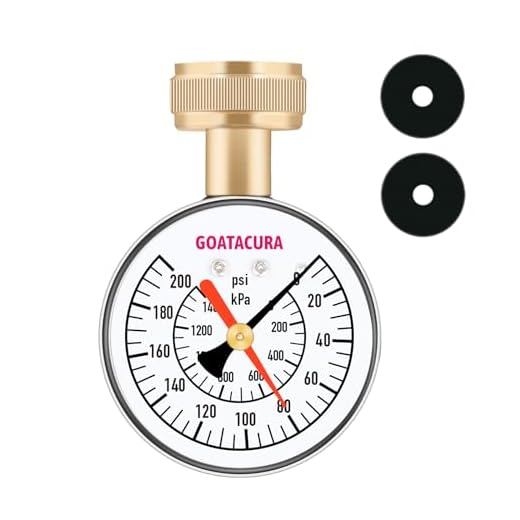

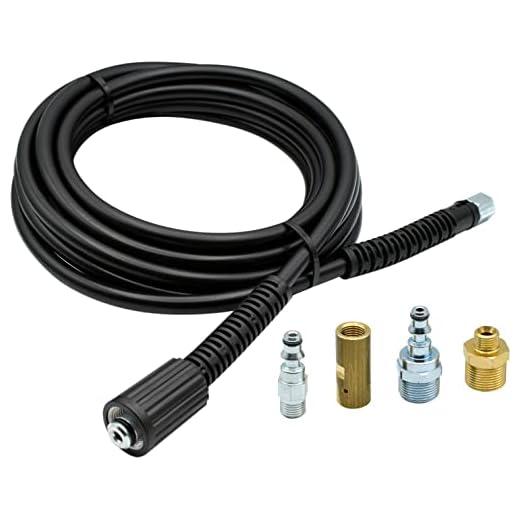

First, check the power supply. Ensure that the device is properly plugged in and that the outlet is functioning. You can test the outlet by plugging in another device to confirm it’s receiving power.
If the power supply is intact, inspect the water supply. Make sure the water hose is connected securely and that there’s adequate water flow. A kinked or blocked hose can prevent the machine from functioning as intended.
Next, examine the hose for leaks. Any damage or wear in the hose can lead to pressure loss. Replace any damaged sections or the entire hose if necessary. Additionally, look at the filter–sometimes debris can clog the intake, hindering performance.
Finally, consider the nozzle. Different attachments deliver varying levels of pressure; ensure you are using the correct nozzle for your cleaning task. If this part is blocked, clean it thoroughly to restore optimal operation.
Troubleshooting Tips for Your Pressure Cleaner
Check your power source by ensuring the plug is securely connected to the socket and that the socket is functioning. Use a multimeter to test for voltage if necessary.
Inspect the water supply. Ensure the hose is not kinked and that the water tap is fully open. Clear any blockages that may restrict water flow.
- Examine the filter screen for dirt and debris; clean it if blocked.
- Verify the hose connections for tightness; leaks can cause a drop in pressure.
Investigate the unloader valve, which regulates pressure within the system; if faulty, it may cause issues. Listen for unusual sounds when operating, which could indicate a stuck valve.
If the motor is running but you notice little or no water discharge, consider inspecting the pump for wear or damage. Replacing worn seals or gaskets might restore functionality.
- Check for any safety features that might have triggered, preventing operation.
- Inspect the detergent injector for clogs if you are not achieving the desired cleaning results.
Review the user manual for specific troubleshooting steps, as different models may have unique considerations. Contact customer support if problems persist despite following these suggestions.
Identifying Power Supply Issues
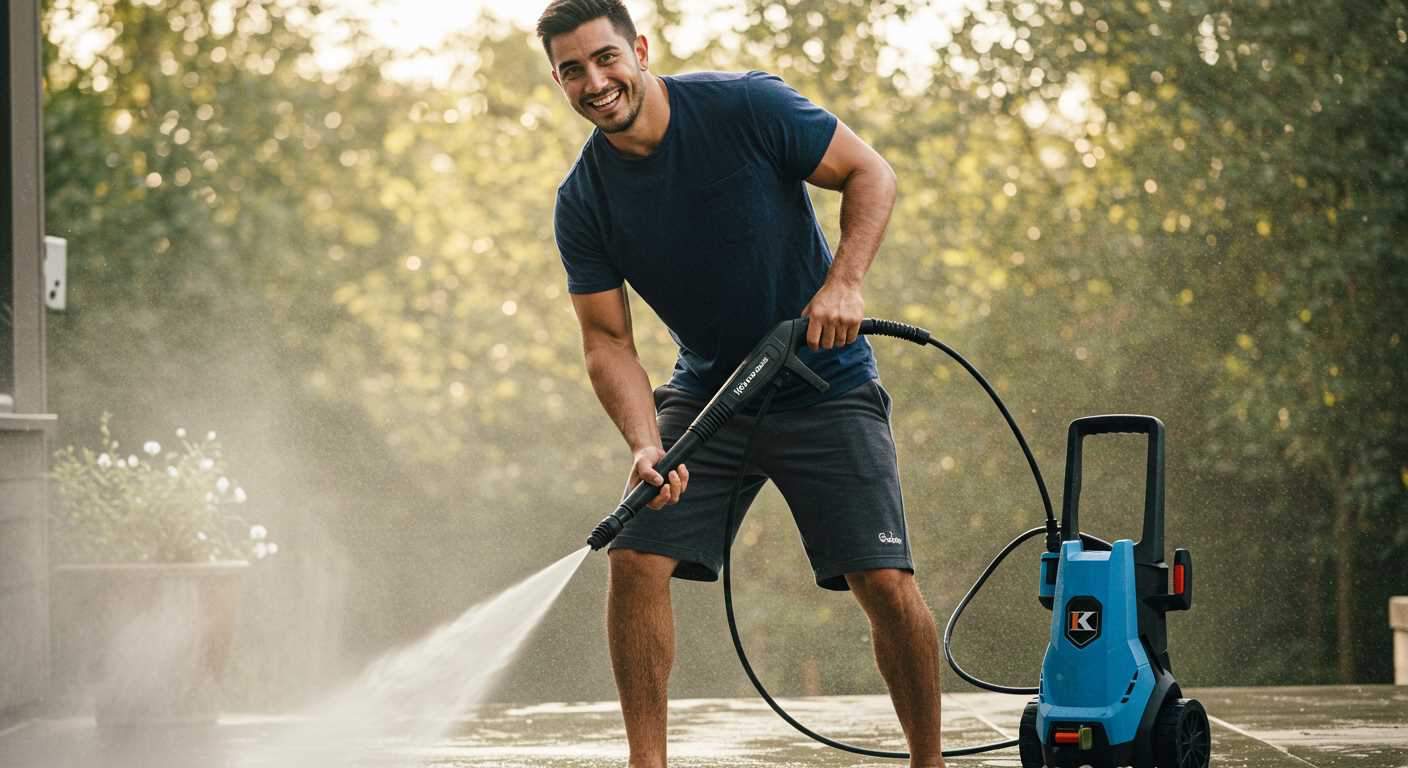
Check the power source first. Ensure the socket is functional by testing it with a different device. If that device operates correctly, the issue may lie within the cleaning equipment.
Next, inspect the power cable for any visible signs of damage. Frayed wires or broken connections can prevent the unit from receiving electricity. If you notice any irregularities, replacing the cable might be necessary.
Confirm that the voltage rating of the supply matches the requirements specified in the user manual. Using a lower voltage can lead to inadequate performance.
Check if there is a tripped circuit breaker or blown fuse. Reset or replace them to restore power flow. When working with electrical components, it’s advisable to cut off the main supply before handling any parts.
If the unit has an on/off switch, ensure it is effectively engaged. Sometimes, switches can wear out or malfunction, leading to an incomplete connection.
For models equipped with a thermal overload protection feature, make sure it hasn’t been triggered. If it has, allow the machine to cool down before attempting to restart it.
If issues persist, consider consulting a qualified technician for a comprehensive assessment of the electrical systems involved.
Checking the Pump Functionality
Begin with inspecting the inlet and outlet valves of the pump. Ensure there are no obstructions or debris that could hinder their operation. Clean any blockages if found.
Next, check for water leakage around the pump unit. Any visible signs of leakage could indicate wear or damage to the seals, which might require replacement. Additionally, inspect the hoses connected to the pump for cracks or punctures that might affect water flow.
It’s also wise to confirm the pressure settings. Adjust them as necessary, ensuring they align with the manufacturer’s recommendations. Consult the user manual for the correct specifications.
Take a moment to listen for any unusual sounds while the motor is running. Grinding or squeaking noises can be signs of mechanical failure within the pump, possibly indicating a need for repair or replacement.
Testing the Pump
- With the washer turned off, disconnect the water supply and check for any residual pressure by squeezing the trigger of the gun.
- Reconnect the water supply and turn on the unit. Observe whether water flows steadily from the nozzle when the trigger is squeezed.
- If water is not being expelled or pressure is significantly reduced, it likely indicates a pump issue.
If performance issues persist despite these checks, consider consulting a qualified technician for further diagnosis. Regular maintenance, including lubricating the pump and periodically checking all components, can help ensure longevity and optimal performance.
Inspecting the Hose for Blockages
Check the hose for any visible bends, kinks, or fractures that may obstruct the flow. Lay it out straight and visually inspect its entire length.
Use a garden hose or another clean water source to flush through the hose. If the water does not flow smoothly, a blockage may exist inside. Disassemble the connections and inspect the ends for debris or clogs.
Pay close attention to the fittings; sometimes dirt accumulates where hoses connect. Use a soft brush or cloth to clean these areas properly. Additionally, check any filters present, as these can also impede water flow.
Common Causes of Blockages
| Cause | Solution |
|---|---|
| Debris accumulation | Flush the hose with water; clean fittings. |
| Kinks or twists | Lay hose straight; avoid tight bends. |
| Worn or damaged hose | Replace the hose; consider a more robust model. |
| Filter clogs | Remove filter, clean it, and reinstall. |
After troubleshooting, reconnect the hose securely before testing the unit again. This systematic approach will eliminate most flow issues stemming from the hose, ensuring optimal performance during use.
Examining the Spray Nozzle Condition
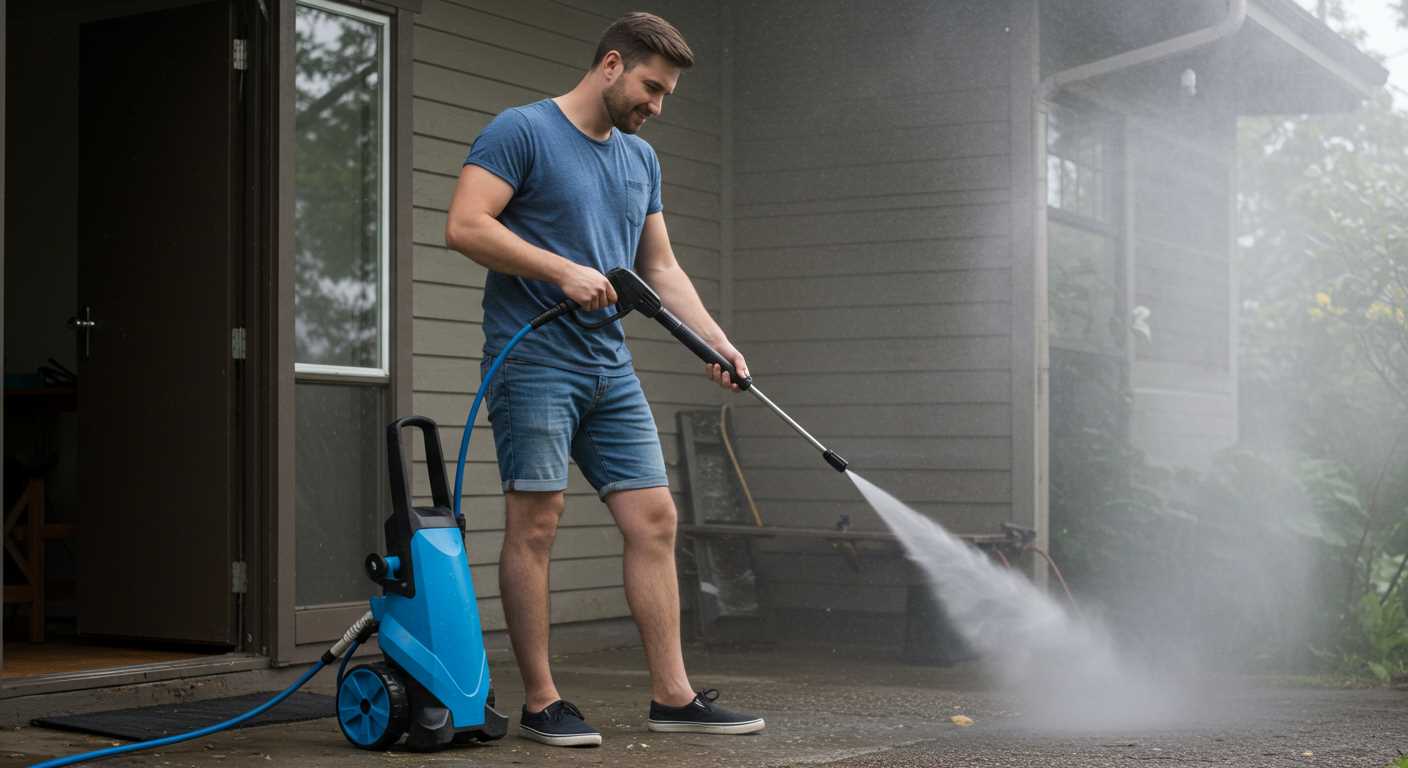
Check the spray nozzle for any signs of wear or damage. Cracks or clogs can significantly affect performance. If the spray is uneven or weak, this is a strong indication that the nozzle requires attention.
Cleaning the nozzle should be your first step. Remove it from the gun and inspect it closely. Use a soft brush or a thin wire to dislodge any debris. Rinsing it under water can help clear build-up. Ensure that the orifice is not blocked; this is crucial for optimal water flow.
Replace the Nozzle if Necessary
If cleaning does not restore proper function, replacing the nozzle may be the best option. This is a straightforward process and can often resolve performance issues. Make sure to select a nozzle that matches the specifications for your unit.
Adjust Pressure Settings
Additionally, verify that the pressure settings are appropriate for the nozzle type. Some nozzles work best at specific pressure levels, so adjusting your unit accordingly can enhance effectiveness. If the nozzle is still underperforming, consider consulting the user manual or seeking help from a technician.
Assessing the Water Supply Quality
Start by ensuring the source of water is clean and free from sediments. Contaminants can significantly reduce performance and cause wear. I recommend using a fine mesh filter to prevent debris from entering the system.
Water Pressure Check
The incoming water pressure should be between 20 to 70 psi for optimal functionality. You can use a simple pressure gauge to measure this. If the pressure is too low, consider adjusting the supply line or switching to a different source.
Temperature Considerations
Verify the temperature of the water. For most machines, it should be below 60°C. Hot water can damage components and void warranties. Ensure that the flow does not exceed specifications listed in the manufacturer’s manual.
Also, inspect hoses for kinks and leaks, which may disrupt the flow. A visual check can save you from guessing game later. Always prioritise maintaining a consistent and clean water supply for the best outcomes.
Troubleshooting Leaks in the System
First, inspect all connection points for signs of water escaping. Tighten any loose fittings or connectors that may not be sealed properly. If leakage persists, consider replacing the washers or O-rings, as these components can wear out over time.
Inspecting Hoses
Examine the hoses for visible cracks or abrasions. A compromised hose can often be the source of leaks. A simple test involves running water through the hose and observing for any dripping or spraying. Replace any damaged sections to restore functionality.
Assessing the Pump and Seal Integrity
Check the pump for leaks around its seals. If water is pooling beneath the unit, this may indicate that the internal seals need replacement. A faulty pump can significantly impact performance, so consider consulting a professional if you’re unsure about the integrity of the seal.
Understanding Electrical Failures and Fuses
If your machine is unresponsive, inspect the fuse box. A blown fuse can interrupt the power supply, rendering your equipment inactive. Check for any tripped breakers or burnt fuses and replace them as necessary.
Testing Electrical Components
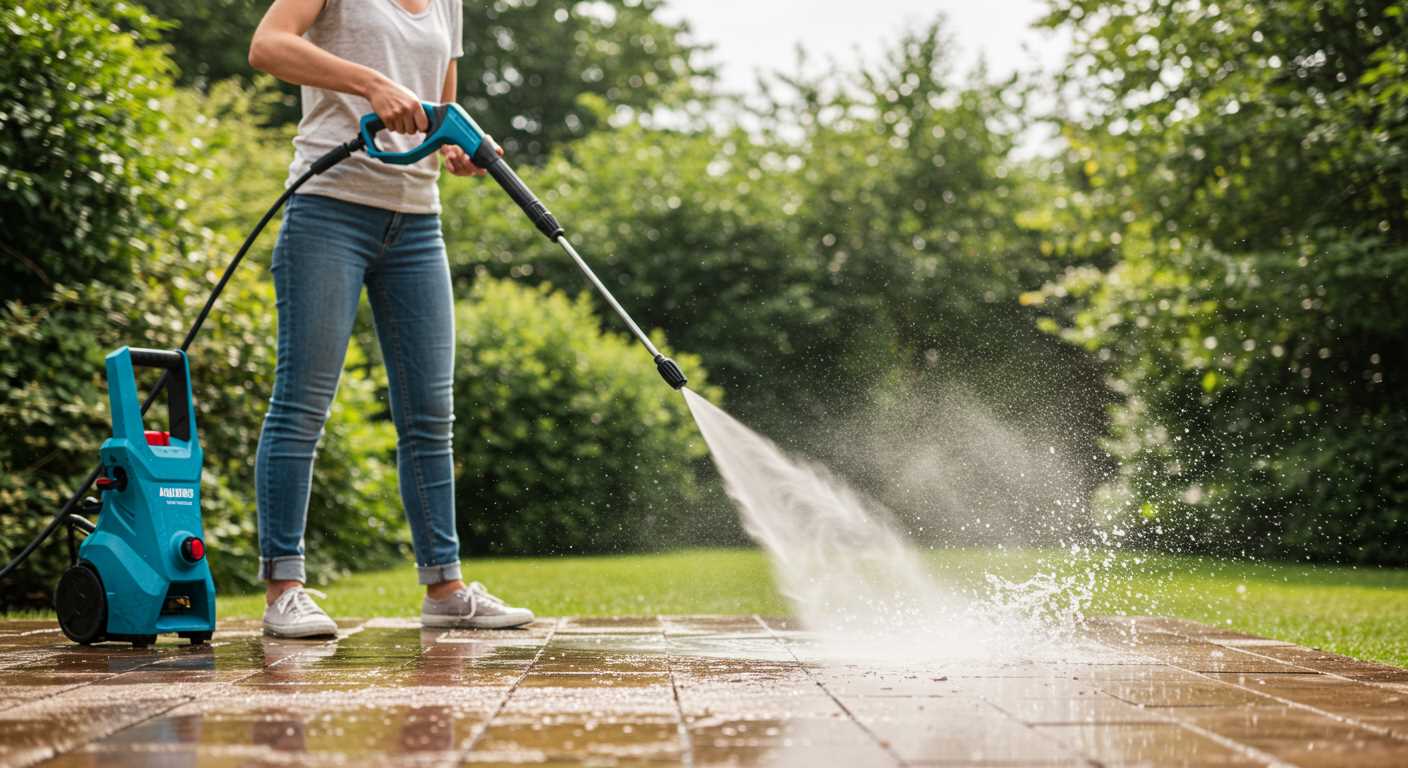
Utilise a multimeter to test the incoming voltage at the outlet. Ensure the power socket is functioning correctly. If you have other devices on the same circuit, verify they work to rule out broader electrical issues.
Examining Wiring and Connections
Inspect the power cord and internal wiring for signs of wear, damage, or loose connections. Damaged cables can disrupt power flow. Tighten or replace connections to ensure continuity.
Regular maintenance tips for longevity
Regularly clean the filter to prevent clogs that can hinder performance. Remove the filter, rinse it under warm water, and allow it to dry completely before reinstalling.
Inspect seals and hoses
Examine seals and hoses for any signs of wear or damage. Replace any frayed or cracked parts immediately to avoid leaks and maintain pressure. Regular checks can save you from more extensive repairs down the line.
Winterisation process
In colder months, ensure the unit is winterised to prevent water from freezing in the pump. Use antifreeze suitable for pressure washers and run it through the system. This step significantly extends the lifespan of key components.




